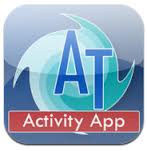What is occupational therapy?
Occupational therapy is a client-centered service that enables performance in activities and greater social participation through occupation. Intervention in occupational therapy can include the process of occupation (the DOING of something meaningful), as well as adapting the environment or altering the task demands to allow for occupation to occur. Intervention can be directly with the child, or via consultation with significant persons in the child’s life (parents, siblings, teachers).
What does the term occupation mean?
Occupation means all the things humans do that have meaning to us. Work, self-care and leisure are the primary adult occupations. For children, occupation includes school tasks, play and self-care. OTs use occupation in treatment to restore or improve function. Therefore, we often use play activities to help develop skills and we also play in order to improve the child’s ability to play. We choose and modify activities carefully through a process called task analysis, and alter the amount of challenge the activity provides so that the “just right challenge” is obtained. The child should be challenged but not to the point of frustration. The activity typically will also have components that address specific skill areas we want to target (eye-hand coordination, in-hand manipulation, strengthening etc.). If we do our job well, the child will look to others like he or she is just playing and having a good time
What is our background and knowledge base?
Occupational therapists are trained to understand and promote human occupation. We possess a knowledge base of neurological, sensory motor and motor development as well as a theoretical base of both occupational therapy theory and theory from fields such as psychology, anthropology and sociology. We have been trained to be careful observers of behavior and analyzers of activity. We are able to provide information, activity ideas, intervention and adaptations to promote the development of certain skills or skill components that may be lacking. We can assist in modifying environments or activities to allow for greater success. Overall, our goal is to promote occupation and occupational performance in the children we see.
Want to know more?
Check out the American Occupational Therapy Association (AOTA) website for more information about OT’s role with children. AOTA: Children and Youth
Source: http://www.AOTA.org










